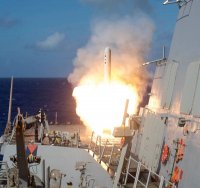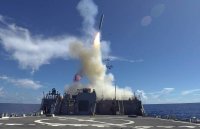


DAHLGREN, Va. – Naval Surface Warfare Center Dahlgren Division (NSWCDD) institutionalized its Technical Excellence Framework to make a difference in the Fleet in terms of capability, quality, security and safety of warfare mission critical products, the command announced Aug. 13.
The positive impact on warfare mission critical products and systems began as John Fiore arrived as the new NSWCDD Technical Director in 2016 with a resolve to institutionalize technical rigor, discipline and excellence.
“Mr. Fiore is championing the implementation of a Technical Excellence Framework (TEF) which is composed of a set of project execution requirements, training, internal project reviews, technical excellence metrics and data-driven continuous improvement that apply to all NSWCDD projects,” said Joe Heil, NSWCDD deputy chief engineer. “Mr. Fiore’s commitment to technical excellence is demonstrated by his active participation in monthly department technical execution reviews, his technical excellence related blogs to thousands of Dahlgren scientists and engineers, and his open door meetings once a week where any employee can drop by and talk.”
Topics of discussion often focus on best practices applied by NSWCDD scientists and engineers while developing products and systems for hundreds of complex mission critical naval warfare programs that significantly contribute to the defense of the nation and the safety of warfighters.
“I know this time will be invaluable for me as I need to hear how we are doing, areas we need to improve, and areas that are working,” said Fiore in his email to the NSWCDD workforce regarding a time to discuss anything on an employee’s mind. “My time is available to both our government employees and contractor partners.”
Prior to Fiore’s arrival as the NSWCDD technical leader, the NSWCDD Chief Engineers (CHENG) Council – composed of the NSWCDD CHENG and the technical department CHENGs – defined and initiated implementation of the Technical Excellence Framework.
Over the course of seven years, the CHENG Council worked to achieve their vision of institutionalizing technical excellence, rigor and discipline in order to meet the primary goal of consistently and efficiently developing safe, secure, reliable, maintainable, and high-quality products and systems.
However, the effort needed a leader with the same vision who would drive and accelerate implementation of the framework throughout NSWCDD.
“Mr. Fiore took the lead while validating the best practices we were trying to make happen and he is doing that through departmental technical execution reviews and his blogs,” said Heil. “He is personally championing technical rigor, discipline and excellence.”
In his white paper on the NSWCDD Technical Excellence Framework, Heil points out that the framework is composed of four key activities to achieve the command’s technical excellence vision and goal.
“Defining best-practice based project execution and reporting requirements,” is the first key activity to achieve technical excellence. The next one – “training the workforce on these best-practice requirements” – is essential, said Heil.
“Executing and conducting project reviews in accordance with the best-practices requirements” is the third activity. “Utilizing metrics for assessment to continuously improve NSWCDD processes, products and the TEF,” is the fourth activity, said Heil adding that the third and fourth activities will drive the institutionalization of technical rigor, discipline and excellence.
NSWCDD also implemented a Project Review Technical Excellence Metrics (PTEM) tool for the entry of a red, yellow, or green assessment of each project’s technical excellence metrics. The tool documents critical information for each project such as sponsors, number of assigned engineers, program and project leaders, associated technical capability, project review, and product release authorities.
The TEF project review technical excellence metrics is required and helps ensure that every project is executing in accordance with NSWCDD fundamental best-practice requirements. The reviews and metrics ensure key stakeholders are aware of project risks and issues and directly contribute to improving project efficiency in regards to cost and schedule and to improving effectiveness in terms of quality.
The PTEM tool provides NSWCDD corporate, department, program, and project leaders with insights into the NSWCDD work portfolio never before available. “Our leaders can now more easily see, assess and address systemic technical execution challenges across multiple programs and projects versus just single point project level challenges,” said Heil.
“The beauty of what we have in our tool is that it’s built in EDW (Enterprise Data Warehouse) and accessible by every warfare center so it could be adapted without too much trouble,” said Gil Goddin, NSWCDD CHENG. “Once we grant access, anyone from a Naval Surface or Undersea Warfare Center division could populate the PTEM tool with their specific projects, and they could refine the metrics. It would give them a running start.”
Meanwhile, the NSWCDD project teams that are embracing TEF requirements and conducting project reviews are reaping the benefits of improved cost and schedule performance, technical performance, risk identification and mitigation, and quality.
“Line managers who typically focused on the people aspect of things are using this tool and taking more ownership of the products being developed within their line or organization – and that’s a big deal,” said Goddin. “We’re seeing a change there which I think is a good thing.”
The command’s progress in implementing the TEF has resulted in the following benefits:
- Documented best practice based execution requirements.
- Technical competency and excellence assessment criteria.
- Tools to collect and report project critical information and metrics.
- A better trained workforce.
- More informed leadership.
- Increased application of project execution best practices.
“The lives of the warfighters depend on our products and systems,” said Heil. “We must therefore execute all projects with fundamental data driven best-practice based, technical rigor, discipline and excellence.”
